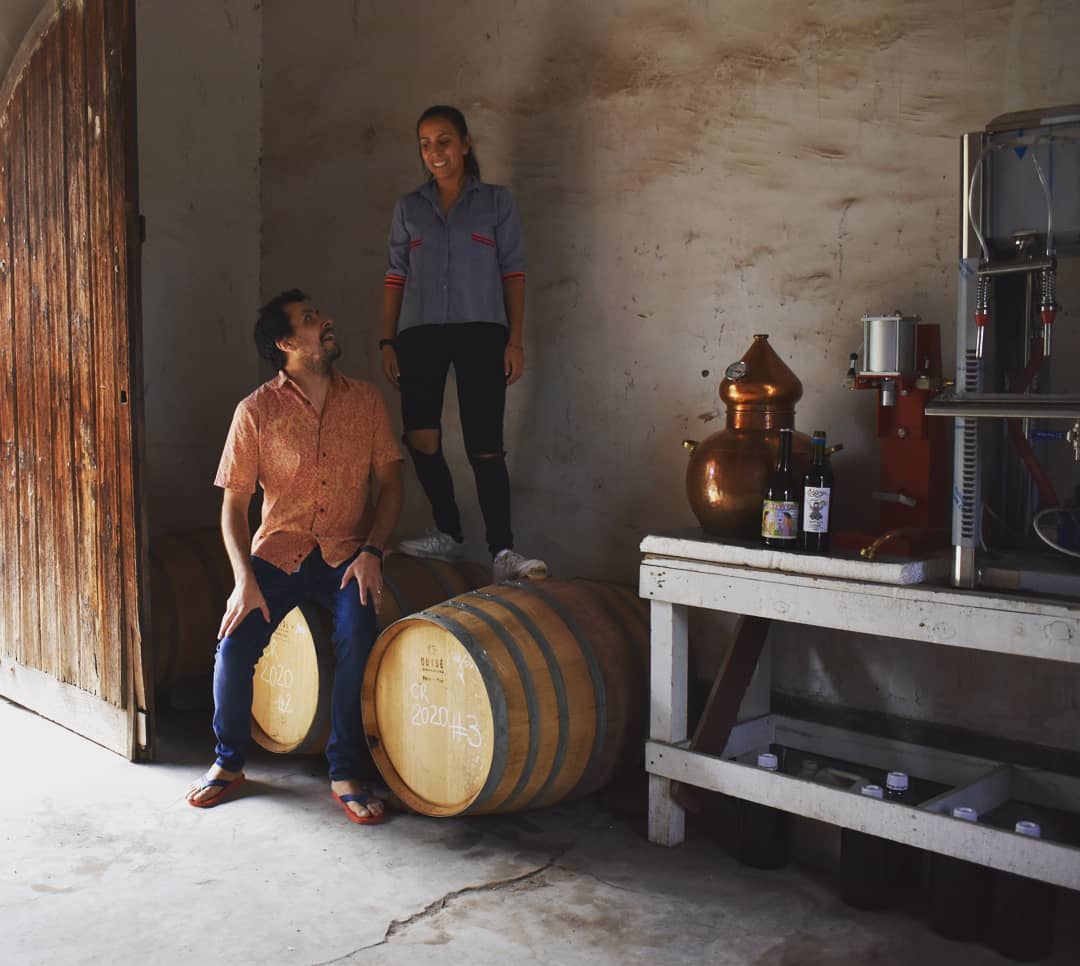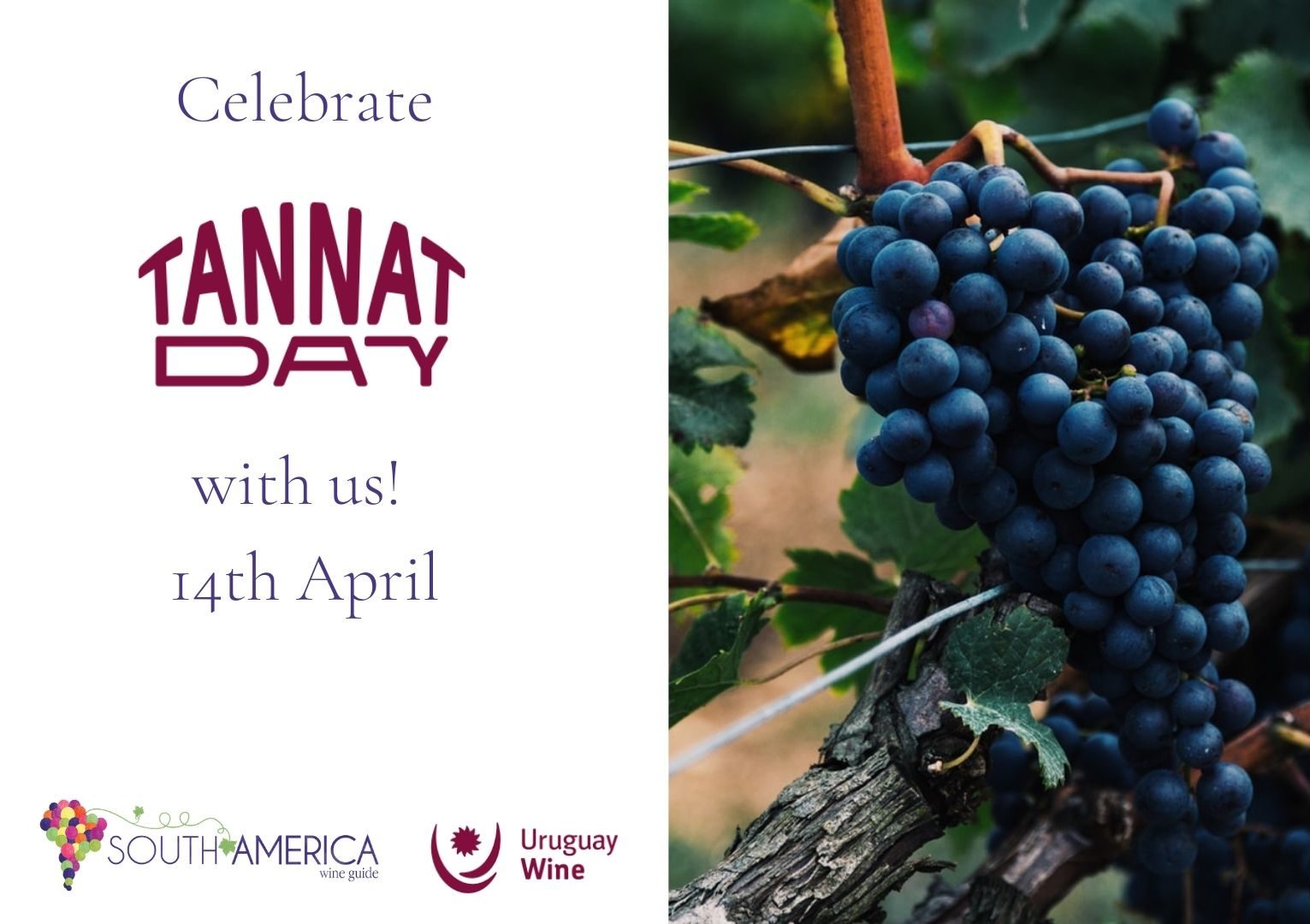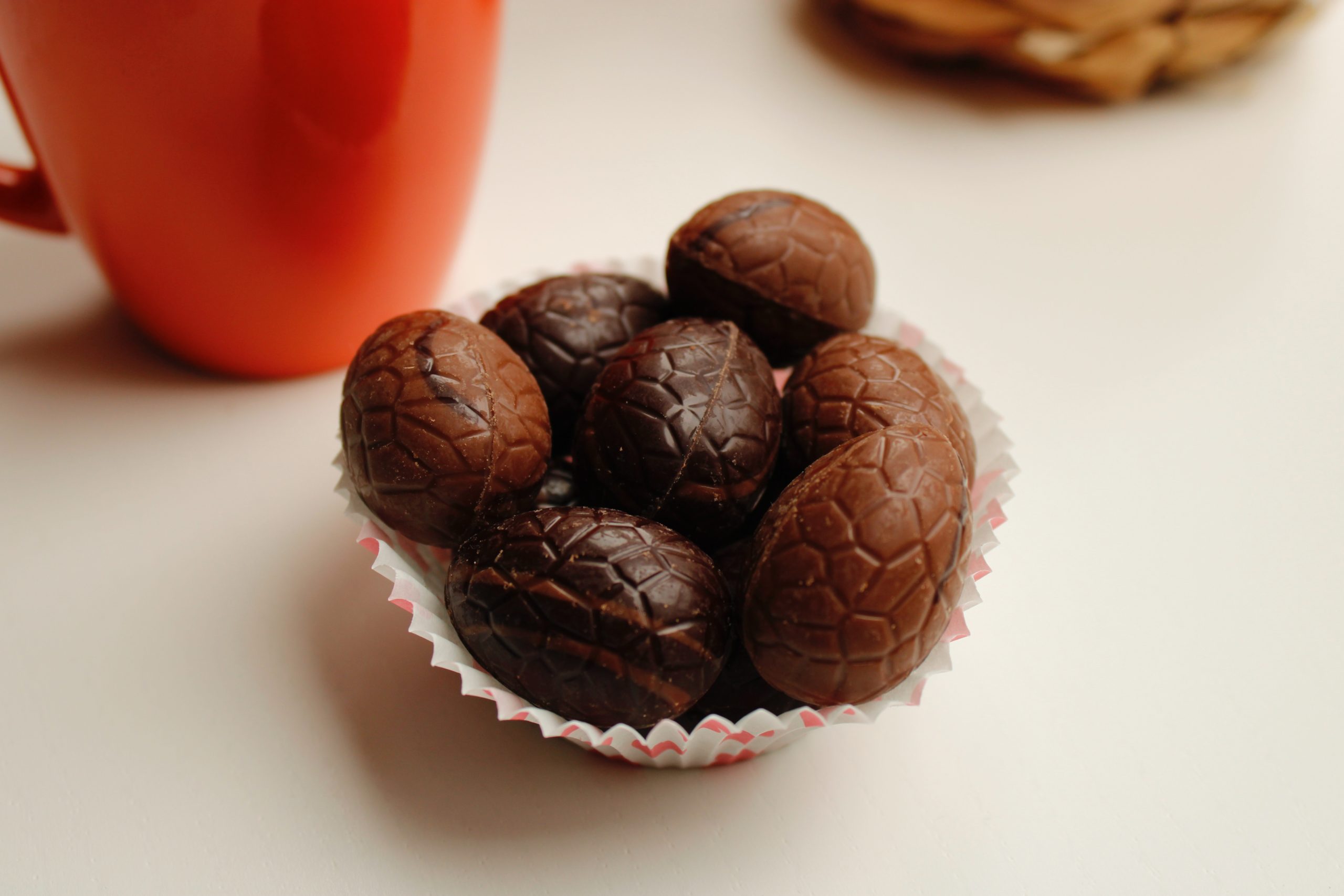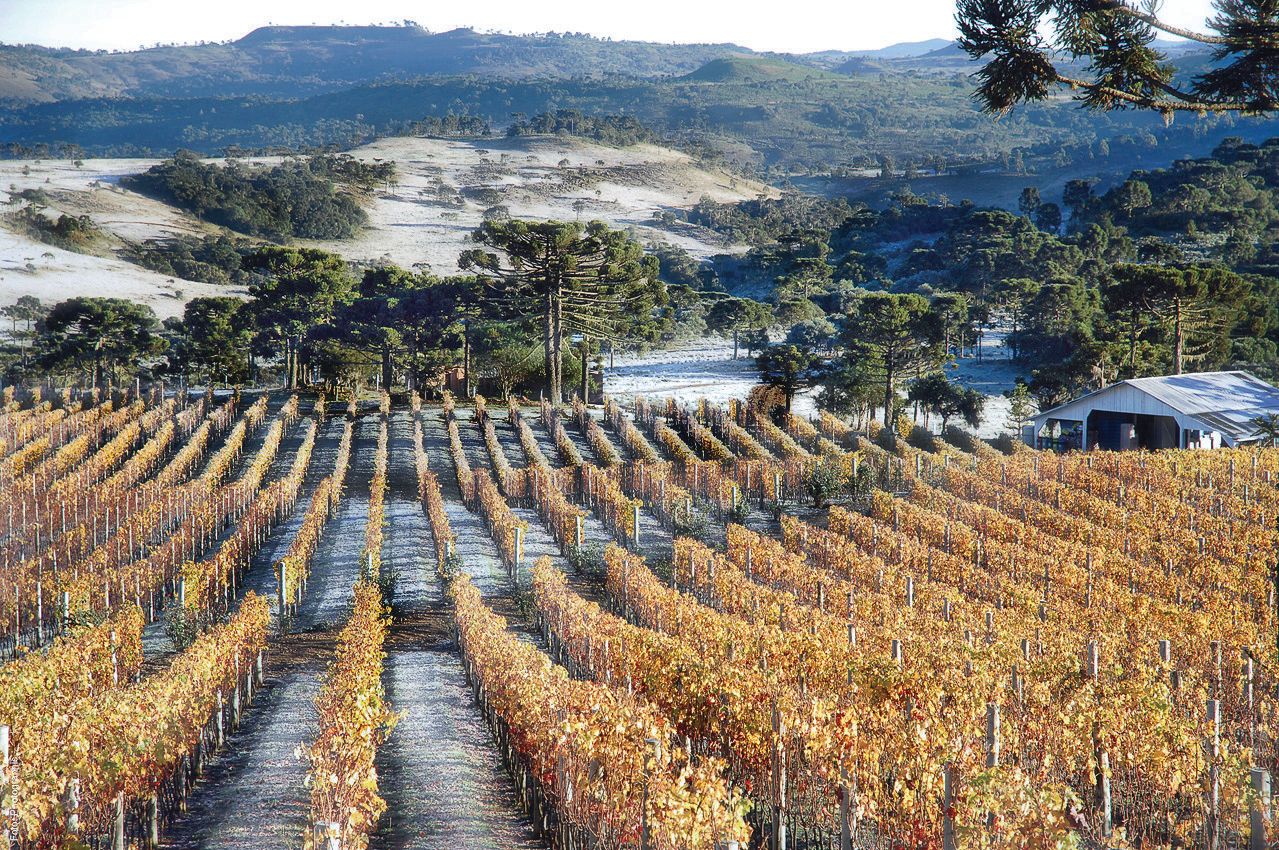Vino la Joda winery is the boutique production of young winemaking couple Daniela and Jorge. Limited production, minimal intervention Carmenère and petnat wines in Aconcagua Andes.
Features
The 14th April is #TannatDay – a day in which we are all given an excuse to raise a glass of Uruguayan Tannat and celebrate Uruguay’s champion variety in all its purple glory. But why stop there? Instead, we are celebrating Uruguayan wine all week with #UruguayWineWeek and an opportunity to explore the many different wines, wine regions and wine producers of Uruguay.
In collaboration with Uruguay.Wine, a gathering of Uruguayan winemakers and wine families, and an esteemed crowd of wine writers and communicators, we’ll be hosting a week of Uruguayan wine events online and would love you to be part of it! Here’s what’s coming up and how you can join in:
Celebrate #TannatDay: 14th April
Throughout the day on 14th April, we’ll be having live discussions about Tannat and the best wine pairings for the variety over Instagram, Twitter, Facebook and Clubhouse. Post your favourite wine pairings and Tannat wines and tag in @southamericawineguide and @uruguay.wine with the hashtag #TannatDay so we can reshare and respond!
Throughout the day on Instagram @SouthAmericaWineGuide we’ll be hosting live interviews with wine writers around the world exploring their favourite Tannat wine pairings. In particular, you can catch up with Lisa Denning aka. @nycrestaurants at 3pm UK (10am EST); Holly Shaw aka. @winenotwhinemom at 4pm UK (11am EST); and with Kelly Mitchell aka. @kellymitchell #thewinesiren at 6pm UK (10am PST).
Do you want to explore some South American food and wine pairings and South American recipes for Easter? Clorrie Yeomans shares her favourite Latin American dishes to serve over Semana Santa.
South American food and wine pairings with Easter recipes
Holy Week (Semana Santa) is one of the most salient events of the year in South America. Bright decorations, delicious food and religious processions mark the religious celebration in the world’s most heavily Catholic region. During the Easter period, people traditionally abstain from eating red meat between Ash Wednesday and Easter Sunday and for the most devout Catholics, Good Friday is also a day of fasting. Nowadays, the cultural legacy of Catholicism in Latin America has inspired an array of delicious traditional Easter foods, particularly vegetarian and seafood dishes.
Here are my top ten South American food and wine pairings that you must try this Easter!
Chipa (Pão de Quiejo)
Small, wheat-free breads made with cheese are typical among several South American countries. The Paraguayan version, Chipa, is commonly enjoyed over the Easter period. The naturally gluten-free dough is prepared with tapioca starch before anise seeds are added for a touch of flavour. The bread is delicious served warm with a glass of Argentine or Brazilian sparkling wine for a relaxed starter or nibbles on Easter weekend.
Chupe aka. Shrimp Chowder
Peruvians love their chupes or chowders and Easter is no exception. Shrimp chowder originated from the city of Arequipa and was particularly popular during Lent while people abstained from eating meat. This hearty chowder is prepared with potatoes, vegetables and milk and served with a fried egg on top. A full-bodied, sumptuous Chardonnay from Casablanca or San Antonio in Chile is the perfect accompaniment for this rich and creamy seafood chowder.
Fanesca
Fanesca is an Ecuadorian Easter soup which is a favourite meat-free option for Good Friday. The Easter recipe is prepared with dried, salted cod (or bacalao in Spanish), butternut squash, mixed beans, corn, rice and onions with a warm and comforting broth made with milk, cream and cheese. Salted cod is traditionally eaten on Good Friday in several South American countries, including Brazil (where it is known as bacalhau in Portuguese). A delicious accompaniment for salted fish would be a slightly saline coastal Sauvignon Blanc from Chile’s Limarí Valley.
Arroz con Leche
Arroz con leche (or ‘rice pudding’) is a popular dessert in Latin America and every country has its unique version of this classic. Rice pudding is enjoyed all year round but especially over Easter in countries such as Bolivia and Venezuela. For a touch of decadence, why not add some raisins and a drop of late harvest sweet wine before simmering the rice with the milk and spices? This dessert would be delicious served with the honeyed notes of a late-harvest Moscatel from Chile, the spicy, floral notes of a late-harvest Torrontés from Argentina or a sparkling Moscato from Brazil would also complement the creamy and delicately spiced pudding.
Rosca de Pascua
Rosca de Pascua is a sweet brioche-like bread in a ring shape decorated with crème pâtissière, nuts, candied fruit and sometimes chocolate eggs. It is believed that this sweet Easter bread originated from Bologna in Italy. However, since then, many countries have developed their own spins on the recipe by adding different flavoured creams, almonds, chocolate and fruit. Some close cousins of the Argentine ‘rosa de pascua’ include ‘mona de pascuas’ in Spain, ‘kulich’ in Russia, ‘Ostertorte’ in Germany, ‘pan de pascua’ in Chile and ‘roscón pascual’ in Mexico. This sweet, buttery and nutty bread would taste delicious with a glass of demi-sec sparkling wine, or a glass of oaked Chardonnay from Mendoza.
Chocolate Eggs
Wine and chocolate is a classic, but you need to match the chocolate to your wine. The silky tannins and medium body of a Chilean Pinot Noir will complement the creaminess and smoothness of the milk chocolate; while for bitter dark chocolate you might want to experiment with a well-structured and full-bodied wine that is not overpowered by the bitter cocoa notes. A dark and full-bodied Chilean Cabernet Sauvignon will complement the complex mocha and dark-fruit flavours of dark chocolate.
Dulce de Leche
Dulce de leche is an irresistible and thick caramel sauce which is used in a range of desserts. Our favourite dulce-de-leche dessert for Easter has to be a take on Cadbury’s cream eggs filled with chocolate mousse and dulce de leche. To match the sweetness of this indulgent dessert, we recommend a late-harvest (cosecha tardía in Spanish) Malbec or Cabernet Franc dessert wine from Argentina. Check out our Ultimate guide to dulce de leche with recipes.
Ceviche
Ceviche is the perfect dish for an Easter brunch, Latin American style! This concoction of fresh, raw seafood with a zesty marinade is served all the way along the Pacific coast from Mexico down to Chile. A cool, crispy glass of coastal Sauvignon Blanc or Riesling from Chile would marry perfectly with this delicate and refreshing seafood dish. Check out our Ceviche recipe and wine pairings.
Torrejas
Torrejas are the delicious Latin American version of French toast or Spanish torrijas. They are typically made from the leftover Easter brioche which is soaked in milk, syrup and sometimes wine or liquor. Torrejas are popular in several countries across Latin America under slightly different names. The toast can be served hot with syrup drizzled on top or cold to allow the syrup to crystallise on the surface. We recommend a crisp and refreshing Malbec rosé from Mendoza for this one.
The gorgeous state of Santa Catarina is best known for its stunning beaches on Santa Catarina island and the cosmopolitan, beachside capital of Florianópolis. But this rather small state, which is sandwiched between Paraná to the north and Rio Grande do Sul to the south, has many hidden gems in its rather less-explored inland area. If you can drag yourself away from the golden beaches and incredible surf on the coast, Santa Catarina has some rather high-altitude mountains that offer spectacular landscapes, adrenaline-fuelled climbing and some of the coolest temperatures in Brazil. Believe it or not, it actually snows here sometimes in winter — something not many Brazilian regions can claim!
The Serra Catarinense wine region & turismo do frio in Santa Catarina
The cool winters make it prime turismo do frio territory and also one of Brazil’s most exciting emerging wine regions. Known as the Planalto Catarinense or Serra Catarinense, almost all of Santa Catarina’s vineyards are planted on this high-altitude plateau of the Santa Catarina mountain range. Vineyard altitudes range from 900 to over 1,425 m.a.s.l. and are concentrated mainly between Campos Novos, Caçador and São Joaquim — one of the highest cities in the country. A few vineyards are also emerging around Água Doce, known as the Planalto de Palmas.
In the late 1960s, the Hiragami family from Japan pioneered apple-growing in the Serra Catarinense, which developed into a thriving apple industry. In 1999 Quinta da Neve planted the region’s first vineyard, and several other local families followed suit. The Hiragami family also planted a vineyard, not too far from their apple orchards, in 2006 which at 1,427 m.a.s.l. became Brazil’s highest vineyard at the time.
The reason the Serra Catarinense offers a good climate for both apples and grapes is the typically wide diurnal range, which is lacking in most of Brazil’s regions with their sub-tropical climate. The daily temperature range that comes from being at this altitude helps produce wines of character and quality. High-altitude viticulture in the Serra Catarinense has boomed and there are now some 400 hectares of vines here. An association of high-altitude producers, Vinhos de Altitude de Santa Catarina, is on a mission to establish an appellation for still and sparkling wines and is currently going through the approval process at Embrapa. The rare occurrence of snow in the region allowed Santa Catarina to produce Brazil’s first ever ice wine during a particularly cold winter in 2009.
Another benefit of the higher altitude and cooler temperatures is that berry maturation and sugar accumulation take place much more slowly and the harvest in the Serra Catarinense can be as much as two months later than that in Rio Grande do Sol, during April or even May, which are much drier and cooler months. However, while the temperatures and drier weather during the harvest season are a plus, the vineyards still have to address the challenge of high rainfall throughout the summer. Site selection is incredibly important, as growers need to find free-draining soils, which are mainly derived from basalt and volcanic rock.
As with Brazil’s other wine regions, Cabernet Sauvignon, Merlot and Chardonnay play an important role here. However, I’m more excited by the potential of Sauvignon Blanc. Despite its smaller size, Serra Catarinense is quite a hive of experimentation, with producers trialling a wide range of varieties and exploring a gamut of styles from sparkling to passito wines. There is also a handful of organic and biodynamic vineyards. As it is such a young region, it is still very much finding its feet but the early results are promising.
Most of these wines are consumed by tourists visiting the wineries during their turismo do frio expeditions, and there are notable wine shops in São Joaquim (including Casa do Vinho with its dedicated tasting room). Nonetheless, some wines are also finding their way into the most sophisticated wine bars and restaurants in Brazil.
Photos by Salton winery which has vineyards in Santa Catarina




